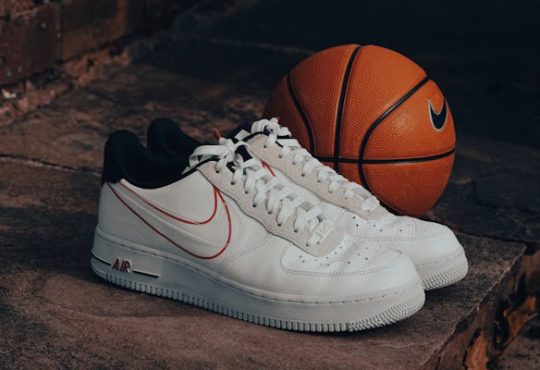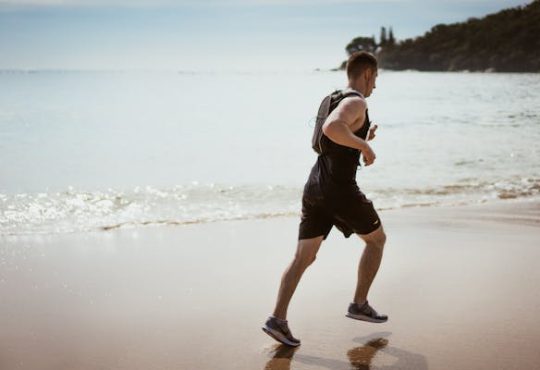Engaging in a workout routine or sport is always a great choice. Exercise and sports offer numerous benefits, such as improving sleep, increasing longevity, and reducing the risk of heart disease. However, like most activities, they have potential dangers, including injuries. This blog will guide you on ways to prevent sports or exercise injuries while working out. Additionally, it will highlight specific types of injuries to watch out for. Let’s dive in!
Common Sports or Exercise Injuries
Exercising or playing sports can sometimes result in joint injuries, such as:
- Sprains: Sprains happen when ligaments in your joints are overstretched or torn. This injury commonly affects areas like the ankle or wrist during workouts or other activities. Symptoms include pain, swelling, and limited movement.
- Strains: Strains occur when muscles are overstretched or pulled too far. They are more likely if you skip warm-ups before exercising. Typical signs include soreness, muscle spasms, and difficulty using the affected muscle.
- Tendinitis or Inflammation: Tendinitis involves the inflammation of tendons due to repetitive motion or overuse. Unlike sprains, this injury targets the tendons rather than the ligaments. It typically causes discomfort, inflammation, and sensitivity in the surrounding joint area.
- Lower Back Pain: This type of pain develops between the spine and buttocks, often from improper posture. Poor lifting techniques or overexertion during workouts can trigger this issue. It may vary from a subtle soreness to intense, debilitating pain.
- Hip or Knee Pain – Overtraining or excessive workouts frequently cause pain in the hip or knee. This discomfort may also result from poor form or repetitive stress on these joints. Left unaddressed, it can worsen and affect mobility.
- Hamstring Strains: A hamstring strain is often felt as a sharp, popping sensation in the back of the leg. This injury typically happens during quick, unexpected movements. Athletes in high-speed sports are especially at risk.
- Shoulder Impingement: This happens when the tendons of the rotator cuff press or grind against the bones of the shoulder. Improper posture during intense upward movements often causes it. Symptoms may include pain, weakness, and limited range of motion.
- Dislocation: Forcing bones in a joint out of place causes a dislocation. This injury frequently occurs in contact sports such as football and boxing, often resulting in intense pain, significant swelling, and noticeable joint deformity.
- Shin Splints: Shin splints refer to pain and tenderness along or behind the shin bone (tibia). This injury often occurs after intense exercise or running on hard surfaces. Overuse or improper footwear usually causes it.
Tips to Prevent Sports or Exercise Injuries
Now that you know about common injuries, it’s time to focus on prevention. Simple measures like warming up, maintaining proper posture, and listening to your body can make a big difference. By being mindful and consistent, you can enjoy exercise safely and avoid unnecessary harm.
1. Develop a Fitness Plan
A structured fitness plan is crucial before starting your workout routine or practice. Using the FITT principle—Frequency, Intensity, Time, and Type—can help you design an effective and safe program. Begin by deciding on the type of exercise that aligns with your goals, whether improving cardio, building strength, or enhancing flexibility. Next, determine how often (frequency) and how intensely (intensity) you’ll perform these activities to match your fitness level. Allocate a specific time for each session to ensure consistency and progress. To keep yourself accountable and organized, write your plan, including these details. A carefully crafted fitness plan boosts your performance and reduces injury risk by offering a clear, achievable roadmap to reach your goals.
2. Conduct Warm-Up Before Exercise or Sports
Before starting any physical activity, it’s essential to warm up properly. Warm-ups can include activities like light stretching, brisk walking, or jogging in place to get your muscles ready. Avoid overdoing these movements to prevent straining your body before the main workout. A good warm-up increases blood flow, loosens joints, and improves flexibility. This preparation minimizes the risk of injuries such as muscle strains or ligament tears, setting the stage for a safer exercise session.
3. Practice Proper Posture
Maintaining proper posture is crucial when lifting weights or performing high-intensity exercises. Correct posture helps distribute weight evenly and reduces muscle and joint strain. A straight back, engaged core, and relaxed shoulders are critical to good posture. Incorporating proper form into your routine can prevent injuries like lower back pain and shoulder impingement. Beyond injury prevention, practicing good posture improves efficiency and maximizes the benefits of your workouts.
4. Use the Right Gear and Equipment
Choosing the appropriate gear and equipment for your sport or workout is vital for safety and performance. The right tools can help protect you from unforeseen injuries by supporting your body and enhancing stability. Safety should always be your top priority when engaging in physical activities. Some of the gear or tools you can use to avoid injuries include:
- Footwear: Selecting the proper footwear is essential because foot structure varies based on how we pronate—running shoes that match your arch level support, reducing joint stress during high-impact activities. Vigorous workouts or sports can place significant pressure on your feet and joints, making proper shoes crucial to avoid injuries. Shoes with adequate cushioning can alleviate inflammation and discomfort, particularly during high-impact workouts. The correct shoe size ensures comfort and stability, vital for performance and injury prevention. Look for durable and breathable materials to maintain foot health during prolonged physical activities. Investing in high-quality footwear is about comfort and long-term joint and muscle care.
- Helmets: Helmets are critical for protecting your head during outdoor activities like biking, skiing, or skateboarding. The type of helmet you choose should match the specific activity to ensure proper protection; for instance, a motorbike helmet won’t suffice for skiing. Helmets shield your skull from severe injuries, including fractures, by absorbing the impact of a fall or collision. It’s essential to pick a helmet with features suited to your needs, such as lightweight materials, proper ventilation, and a secure fit. Both comfort and durability are crucial, particularly during extended sessions or intense activities. If your budget allows, consider investing in premium models with advanced safety technologies for added peace of mind. A well-fitted helmet boosts safety and enhances confidence during your activity.
- Shin Guards: Shin guards are an excellent way to protect your lower limbs, mainly if you engage in sports like football or soccer. Their primary purpose is to shield the soft tissues and joints in your shins from direct impacts or abrasions. They’re instrumental in high-contact sports or activities where your lower legs are vulnerable. When selecting shin guards, ensure they fit snugly but comfortably on your legs to avoid restricting movement. A good fit allows you to run or walk without discomfort while maintaining optimal protection. Lightweight and durable shin guards are ideal for both beginners and professionals. Incorporating shin guards into your routine can significantly reduce the risk of painful shin splints and other injuries.
- Knee Pads: Knee pads are indispensable protective gear designed to safeguard your knees from injuries caused by falls or collisions. Athletes commonly use these pads in sports and activities like weightlifting, skateboarding, and volleyball, where knee protection is crucial. They help prevent injuries such as dislocations, sprains, or even hyperextension of the knee joint. If you want added support for heavy-impact exercises, knee braces are another excellent option. When choosing knee pads or braces, prioritize comfort and a full range of motion to ensure they don’t hinder your activity. Invest in more durable and well-cushioned knee braces for high-impact or extreme sports for maximum safety. Remember that knee braces are effective but can be bulky and more expensive than regular knee pads.
- Yoga or Exercise Mat: A yoga or exercise mat is essential for workouts that involve lying down, planking, or jumping. Performing these exercises without a mat increases your risk of slipping or falling, which could result in injuries. A quality mat provides cushioning, grip, and stability, helping you maintain proper form during sessions. When choosing a mat, look for a suitable thickness, material, and grip balance to suit your workout style. Thicker mats offer better cushioning, making them ideal for activities that place stress on your knees or joints. Additionally, durable mats with non-slip surfaces ensure safety, especially during high-intensity movements. Investing in a reliable mat enhances your comfort and reduces the risk of exercise-related injuries.
5. Listen To Your Body
The famous 1980s motto, “No pain, no gain,” encouraged pushing limits, but balance is critical. While effort is necessary for achieving results, overexertion can lead to setbacks or injuries. Progress in sports and workouts happens gradually through consistency and persistence, not through overdoing it in a single session. If you feel you’ve reached your limits, taking a break is essential for your body to recover. Resting when needed helps prevent injuries like tendon inflammation, sprains, and muscle strains, ensuring long-term success.
6. Cool Down After Exercise
Cooling down after a workout holds equal importance to warming up before it. Simple activities like stretching, brisk walking, or light jogging help your body transition back to a resting state. Spend five to ten minutes on these exercises to gradually lower your heart rate and prevent dizziness. Cooling down helps alleviate muscle stiffness and soreness, fostering a quicker and more effective recovery. Making this a habit can enhance flexibility and prepare your body for your next workout session.
Prioritize Safety and Listen to Your Body for Long-Term Wellness
Exercise and sports are an excellent way to boost your physical and mental health. Following the tips in this blog can significantly reduce the risk of injuries during your activities. Making regular exercise a part of your routine and using the right gear will ensure both safety and optimal performance. Always prioritize safety and listen to your body to ensure you stay in good condition. If you need quality equipment for your fitness journey, don’t hesitate to explore our platform for options that suit your needs.





